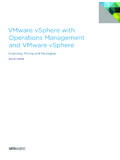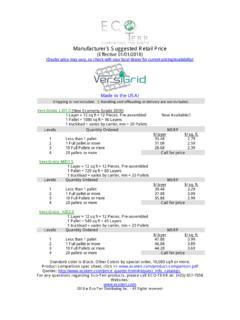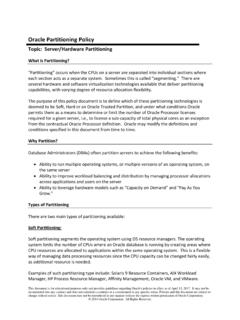Transcription of ORGANISATION FOR ECONOMIC CO-OPERATION …
1 ORGANISATION FOR ECONOMIC CO-OPERATION AND development TRANSFER pricing METHODS JULY 2010 Disclaimer: The attached paper was prepared by the OECD Secretariat. It bears no legal status and the views expressed therein do not necessarily represent the views of the OECD member states. For a more comprehensive description of the views of the OECD and its member states in relation to the arm s length principle and transfer pricing , readers are invited to refer to the OECD Transfer pricing Guidelines for Multinational Enterprises and Tax Administrations which were approved, in their original version, by the Committee on Fiscal Affairs on 27 June 1995 and by the Council of the OECD for publication on 13 July 1995 [C(95)126/FINAL] and were supplemented and updated since.
2 In particular, a substantial revision of the Transfer pricing Guidelines was approved by the Council of the OECD on 22 July 2010 (see or ,3343,en_2649_33753_45690500_1_1_1_1, ). CENTRE FOR TAX POLICY AND ADMINISTRATION July 2010 Page 2 TRANSFER pricing METHODS Introduction 1. Chapter II of the OECD Transfer pricing Guidelines for Multinational Enterprises and Tax Administrations (hereafter the TPG ) contains a discussion of five transfer pricing methods that can be applied to establish whether the conditions of controlled transactions are consistent with the arm's length principle.
3 These five methods consist in three traditional transaction methods : the comparable uncontrolled price method ( CUP method), the resale price method, and the cost plus method; and two transactional profit methods : the transactional net margin method ( TNMM ) and the transactional profit split method. 2. This five transfer pricing methods represent the international consensus on the manner of applying the arm s length principle. In order to minimise the risk of double taxation, countries are encouraged to make available all the five transfer pricing methods in their domestic rules and to apply them in accordance with the TPG.
4 A. Description of the methods 3. Guidance on the selection and application of transfer pricing methods can be found in Chapter II of the TPG. A revised version of this guidance was approved by the Council of the OECD on 22 July 2010 and can be downloaded from the Internet (see ). All the references in this paper are references to the 2010 edition of the TPG. The CUP Method (see TPG paragraphs ) 4. The CUP method compares the price charged for property or services transferred in a controlled transaction to the price charged for property or services transferred in a comparable uncontrolled transaction in comparable circumstances.
5 If there is any difference between the two prices, this may indicate that the conditions of the commercial and financial relations of the associated enterprises are not arm s length, and that the price in the uncontrolled transaction may need to be substituted for the price in the controlled transaction. 5. An uncontrolled transaction is comparable to a controlled transaction ( it is a comparable uncontrolled transaction) for purposes of the CUP method if one of two conditions is met: None of the differences (if any) between the transactions being compared or between the enterprises undertaking those transactions could materially affect the price in the open market; or Reasonably accurate adjustments can be made to eliminate the material effects of such differences.
6 July 2010 Page 3 6. The comparable uncontrolled price method can be applied on the basis of the taxpayer s transactions with independent enterprises ( internal comparables ), or on the basis of transactions between other independent enterprises ( external comparables ). 7. Although this method is potentially available for all types of transactions, the product comparability requirement to be able to apply it in a reasonably reliable manner is especially high, because any product difference may materially affect the price of the transaction, while it is often not practicable to make reasonably accurate comparability adjustments for such differences.
7 In the absence of internal comparables, the CUP method is therefore most helpful for establishing an arm s length price for: i) sales of commodities traded on a market, subject to the controlled transaction and comparable uncontrolled transaction(s) taking place in comparable circumstances, including at the same level of the commercial chain ( sale to a secondary manufacturer, to a distributor, to a retailer, etc.), and ii) some common financial transactions, such as the lending of money.
8 In effect, market prices (such as commodity prices or rates of interest) may be publicly available for these types of transactions. July 2010 Page 4 The Resale Price Method (see TPG paragraphs ) 8. The resale price method begins with the price at which a product that has been purchased from an associated enterprise is resold to an independent enterprise. This price (the resale price ) is then reduced by an appropriate gross margin (the resale price margin ), determined by reference to gross margins in comparable uncontrolled transactions, representing the amount out of which the reseller would seek to cover its selling and other operating expenses and, in light of the functions performed (taking into account assets used and risks assumed), make an appropriate profit.
9 What is left after subtracting the gross margin can be regarded, after adjustment for other costs associated with the purchase of the product ( customs duties), as an arm s length price for the original transfer of property between the associated enterprises. 9. Thus, in a resale price method, the resale price margin ( the gross margin) that the reseller earns from the controlled transaction is compared with the gross margin from comparable uncontrolled transactions. 10. This method is probably most useful where it is applied to sales and marketing operations such as those typically carried out by a distributor.
10 In some circumstances, the resale price margin of the reseller in the controlled transaction may be determined by reference to the resale price margin that the same reseller earns on items purchased and sold in comparable uncontrolled transactions (an internal comparable ). In other circumstances (especially where reliable internal comparables are not available), the resale price margin may be determined by reference to the resale price margin earned by independent enterprises in comparable uncontrolled transactions ( external comparables ).
















